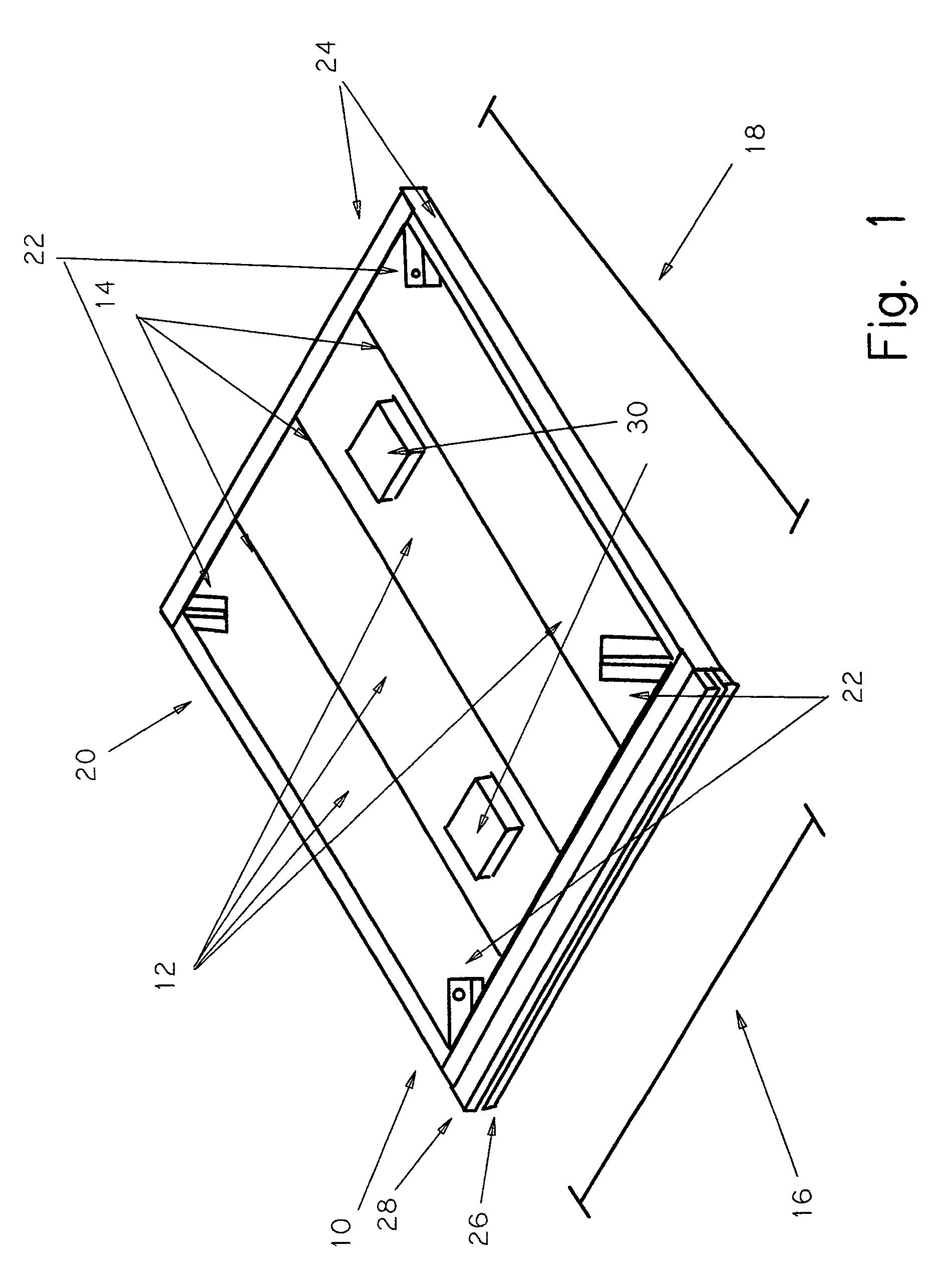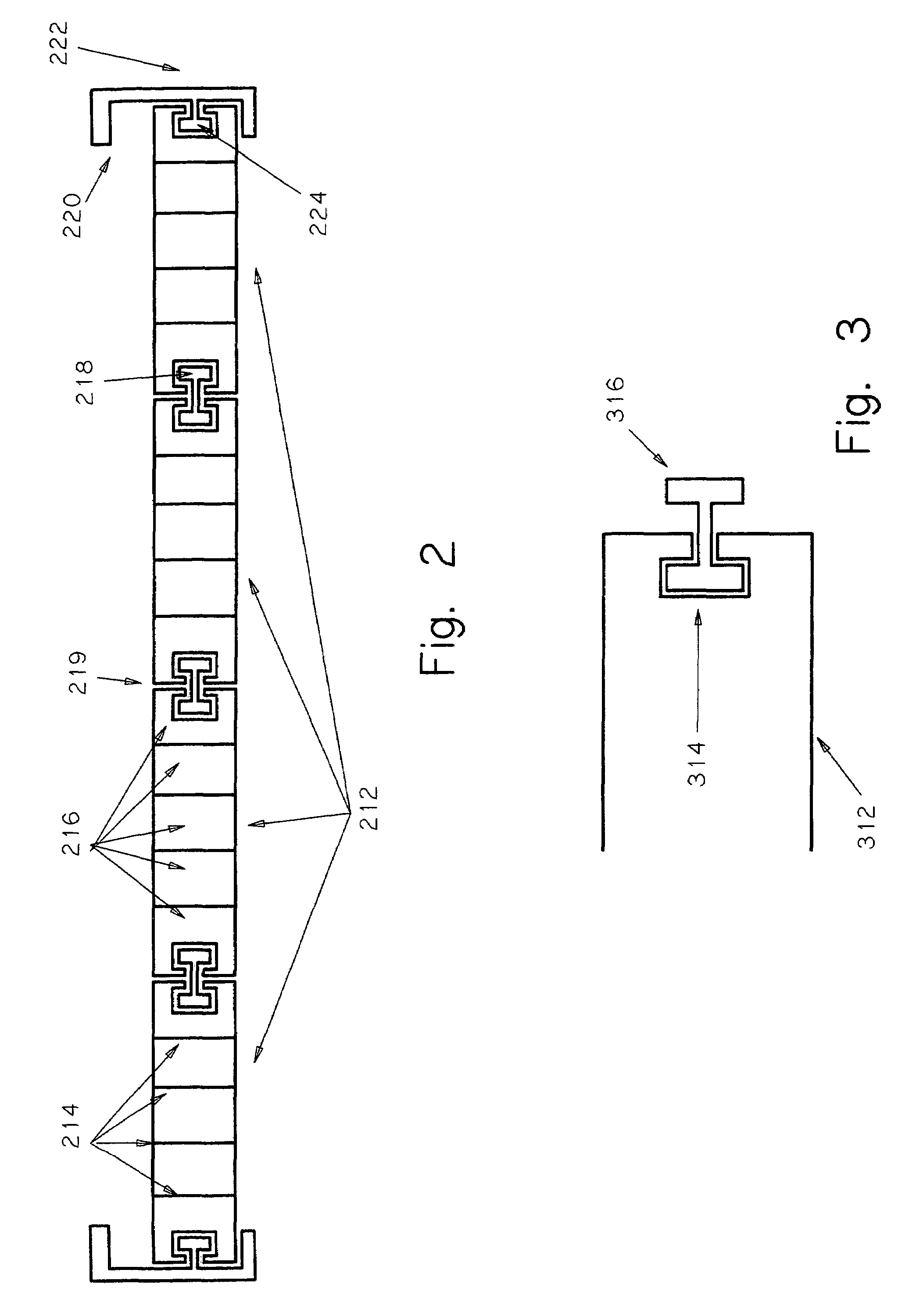Full contact floating roof
a floating roof and full contact technology, applied in the direction of packaging, containers, building components, etc., can solve the problems of inability to eliminate such losses, inability to achieve absolute elimination of losses, and limited engineering and practicality of full contact roof types, so as to improve fire suppression, improve fire protection, and suppress fire
- Summary
- Abstract
- Description
- Claims
- Application Information
AI Technical Summary
Benefits of technology
Problems solved by technology
Method used
Image
Examples
Embodiment Construction
[0029]Referring to FIG. 1, a subsection 10 of a full contact floating roof of the present invention is shown. The subsection 10 is comprised of four square angle parallelepiped buoyant cells 12, which are joined together by joins 14. Thus, the width 16 of the subsection 10 will be essentially four times the width of each buoyant cell 12, and the length 18 will be essentially the length to which the buoyant cells have been cut. Because it may be convenient to pre-assemble subsections 10 away from the final construction site, the length 18 of the buoyant cells 12 can be determined by factors such as total weight of the subsection 10, shipping size limitations, or the dimensions of the overall roof to be constructed.
[0030]In the preferred embodiment, the subsection 10 is provided with a frame 20 which around the perimeter of the subsection 10, allowing for increased structural integrity for the subsection 10, and allowing for easy attachment of lift points 22 to the subsection 10. If o...
PUM
 Login to View More
Login to View More Abstract
Description
Claims
Application Information
 Login to View More
Login to View More - R&D
- Intellectual Property
- Life Sciences
- Materials
- Tech Scout
- Unparalleled Data Quality
- Higher Quality Content
- 60% Fewer Hallucinations
Browse by: Latest US Patents, China's latest patents, Technical Efficacy Thesaurus, Application Domain, Technology Topic, Popular Technical Reports.
© 2025 PatSnap. All rights reserved.Legal|Privacy policy|Modern Slavery Act Transparency Statement|Sitemap|About US| Contact US: help@patsnap.com



